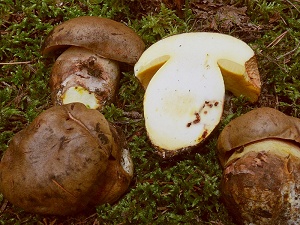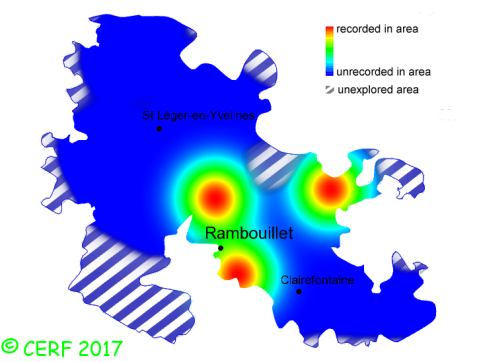| Boletus impolitus Fr. |
|
|
|
|
|
|
The cap is clay to tawny-brown, with pink shades, fleshy, irregular, convex and possibly depressed and bumpy. The cap surface is matt, downy and dry, felty then smooth. The cap margin is very inrolled and pink. The stem is sturdy, stout or cylindrical to spindle-shaped, rooting. Its colour is straw yellow at the apex, brown to dark brown towards the base, with a pink tinge here and there. No network is present on the stem, but it is dotted with brown.. The flesh is whitish yellow to pale sulphur yellow, unchanging, with a more intense yellow above the tubes; its taste is mild; the odour is of iodine at the base, also present elsewhere but fainter; The tubes are lemon yellow to chrome yellow, not bruising blue. The pores are narrow, lemon yellow (same as tubes), not turning blue when pressed. The spore print is olive brown. It grows in broad-leaved forests, on a rather neutral or acid soil, mostly with oaks. The fruiting period takes place from June to November.
Chemical tests : The flesh turns ochre when in contact with ammonia. Distinctive features : clay-brown to cinnamon-brown cap; yellow pores; stem without network; no colour change of pores when pressed; iodine odour at stem base Boletus impolitus is quite rare and localised in the forest of Rambouillet, and is infrequent, more generally speaking . | ||
|
page updated on 14/01/18

